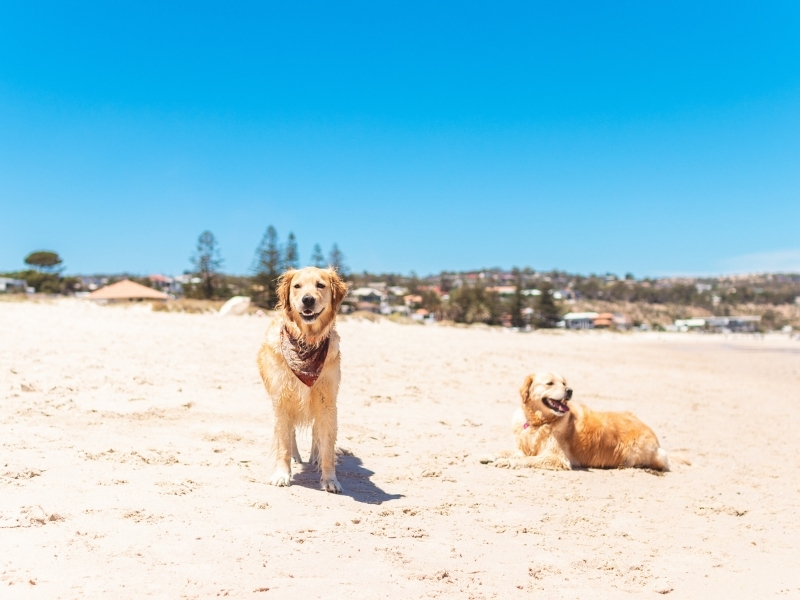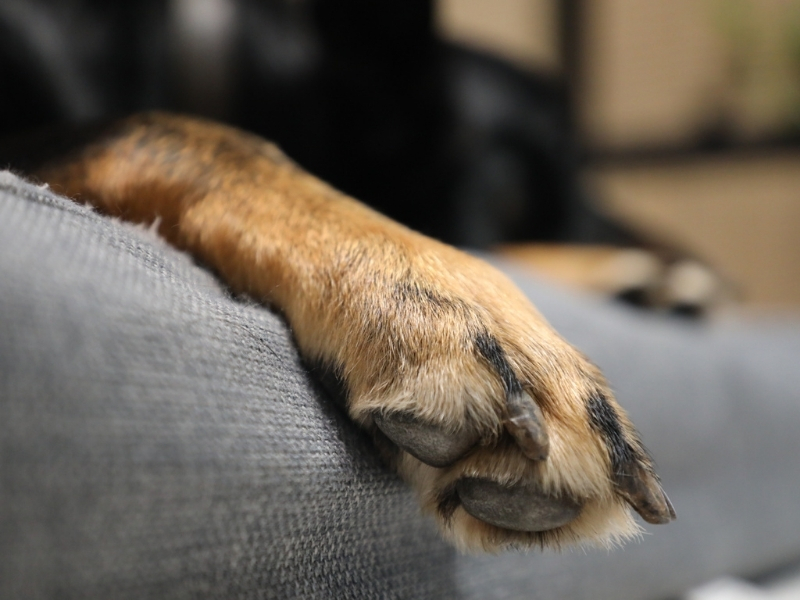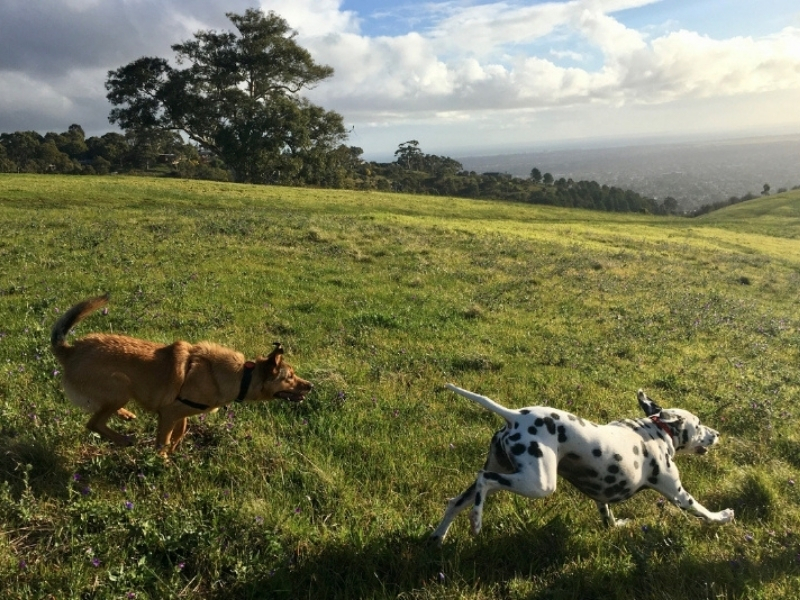Have you ever had to run across a car park, barefoot in the middle of summer? You hop in pain across the asphalt like it’s hot coals, tip-toeing along the painted white traffic lines for a fleeting moment of pain relief. You curse the sun – if only you had remembered to bring your thongs!
Unfortunately, our dogs don’t get to enjoy the luxury of footwear, and a walk on a hot day can cause serious distress and damage to their exposed paws.
Here are some tips on how to keep your hound happy, active and safe during the warmer months.

When the floor is made of lava
Burnt paw pads can cause dogs a lot of pain. They impair their ability to walk, can result in secondary infections and can trigger aggressive responses if their sore feet are touched.
RSPCA’s Dr Brooke Hasler recommends the 10-second touch test.
“I usually tell owners to place their bare hands or bare feet on a sun-exposed surface for 10 seconds – if they experience discomfort, then it’s too hot for their dog’s paws.”
To minimise the dangers of hot surfaces, it’s best to walk your dog early in the morning or later in the evening when temperatures are lower and surfaces have had a chance to cool down. If the weather remains warm overnight, take your dog on a shorter walk than usual.
Make sure your dog has plenty of access to shade and multiple sources of clean water (in containers that won’t tip over) throughout the day.

Heat stress poses a particular risk for some dogs
Some dogs are especially vulnerable on hot days. Brachycephalic breeds like pugs and bulldogs, dogs with long coats, elderly or overweight dogs, and puppies are all more susceptible to heat stress – though it’s important to remember that any dog can suffer this potentially fatal condition.
“Heat stress can cause a dog’s internal temperature to rise too high and can result in irreversible damage to organs, seizures and – in severe cases – sometimes death,” said Dr Hasler.
“Dogs pant to cool their bodies, so if they cannot pant enough to cool down they can slip into heat stress. If owners notice their dog panting excessively, they should be removed to a cool area straight away.
“If there are any signs of wobbliness, collapse or distress, they need to contact an emergency vet straight away.

Off the beaten track
When the pavement’s too hot, you can always take your dog off-road. Shaded walking trails with plenty of tree cover can act as a natural coolant for your pooches exposed paws.
This alternative does, however, increase the risk of encountering a snake. “When walking through scrubland, please keep your dog on a lead – you don’t want them chasing after snakes,” said Dr Hasler.
Just like humans, a snake bite can cause an anaphylactic reaction and will need immediate vet treatment where the dog will receive anti-venom. Failure to receive treatment – or to receive treatment in time – can result in death.
Dr Hasler cautions owners to remain vigilant for another summer-time hazard – grass seeds.







